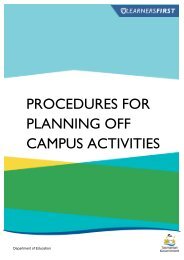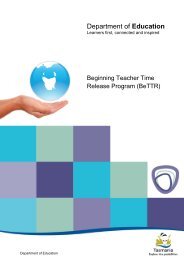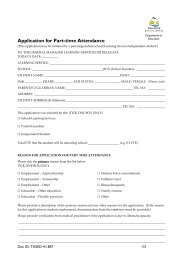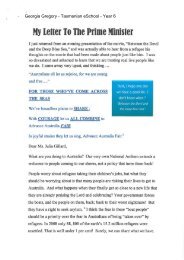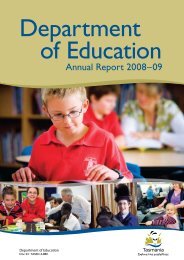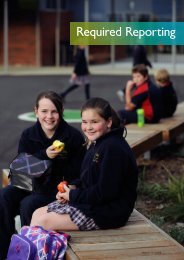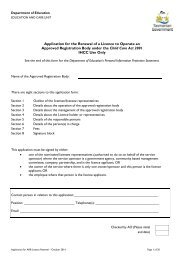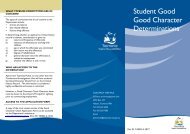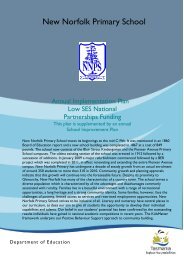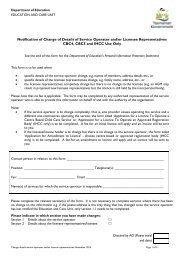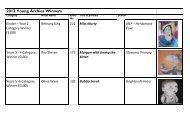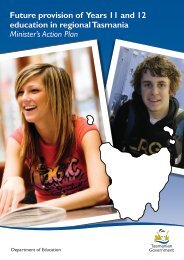Tas Curriculum K-10 - Languages - Italian - Department of Education
Tas Curriculum K-10 - Languages - Italian - Department of Education
Tas Curriculum K-10 - Languages - Italian - Department of Education
You also want an ePaper? Increase the reach of your titles
YUMPU automatically turns print PDFs into web optimized ePapers that Google loves.
Standard one overview<br />
The standard one student may begin learning the target language in the early years. Students at standard<br />
one have a strong focus on self and their personal reactions and experiences.<br />
Students enjoy exploring the sounds and meanings <strong>of</strong> the target language and a new form <strong>of</strong><br />
communication. They begin to experiment mainly through listening and speaking activities particularly<br />
through the Arts (music, dance, drama, media, visual art), games and role-play.<br />
Communication<br />
Students experiment with language, participating in singing favourite songs and rhymes. They begin to<br />
imitate intonation, stress, rhythm and pronunciation in spoken words and phrases, and use rehearsed<br />
simple language. Students can respond non-verbally to simple directions. They engage in shared reading<br />
experiences, relying on pictorial clues and teacher dramatisation to comprehend meaning. Students<br />
understand that they live in a world that can be explored through target language and images. Students may<br />
trace, copy or write short texts with the support <strong>of</strong> models. For scripted languages, students become<br />
aware that there are different scripts and begin to recognise characters from the target language.<br />
Language as a system<br />
Students understand that the sounds <strong>of</strong> the target language may be the same or different from other<br />
languages. Students begin to notice similarities and differences in the patterns <strong>of</strong> oral language. For scripted<br />
languages, students recognise that there are different writing systems.<br />
Language and culture<br />
This strand is interwoven with communication. Examples are provided in the content area <strong>of</strong> this document<br />
and will be expanded upon as teachers work with the intercultural approach. Students understand that they<br />
are part <strong>of</strong> a connected world. They begin to learn about their own culture and identity through noticing<br />
aspects <strong>of</strong> language that are demonstrated in visual ways – for example, on road signs.<br />
Thinking<br />
Students display a natural curiosity and interest as they experiment with the target language and its<br />
patterns. They appreciate that some concepts that they understand through English may be expressed<br />
differently in the target language.<br />
Using ICT<br />
Students begin to access ICT to view authentic texts, symbols and images, and listen to songs and stories.<br />
They may communicate simple messages using ICT and begin to enjoy interactive language programs.<br />
25



